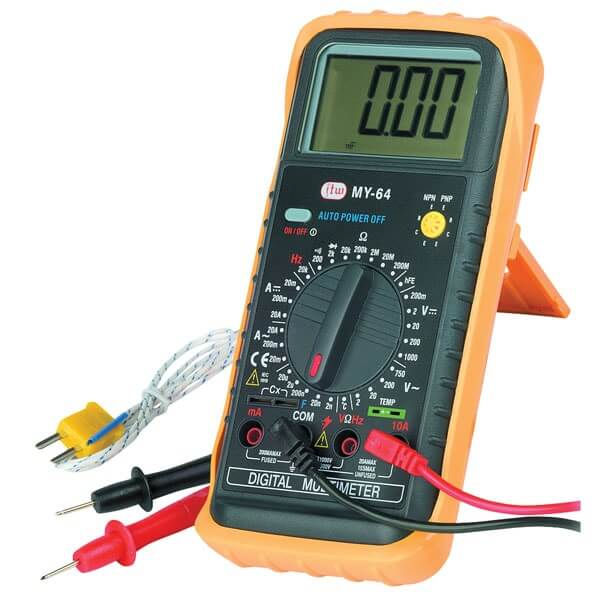Digital Voltmeter
What is a Voltmeter?
Voltmeter is an electrical measurement device used to measure a potential difference between two scales. A voltmeter is a device used to measure the electrical potential difference between two points in an electrical circuit. Analog voltmeters shift the pointer over a scale in accordance to the voltage of the circuit; digital voltmeters display the voltage by using an analog-to - digital converter.
A voltmeter is a great accessory that will help you determine how well your car's battery and alternator are working. The voltmeter will be able to tell you how the alternator is operating in conjunction with keeping the battery charged.
Digital Voltmeter
The digital voltmeter (DVM) calculates an undefined input voltage by transforming the voltage to a digital value and displays the voltage in numeric form. DVMs are typically built using a specific form of analog-to-digital converter called an integrative converter. Digital voltmeters view the magnitude of AC or DC voltage measured directly as a single numeric value instead of a pointer deflection on a continuous scale as in analog instruments. Digital instruments are those which use logic circuits and techniques obtained and measured and display it in digital form.
Voltmeter Symbol
Voltmeter symbol in circuit diagrams, the voltmeter is represented by the letter V in a circle, with two lines appearing indicating the two measurement points.
How does a voltmeter work?
DC voltmeter consists of an attenuator, a multi-stage DC amplifier and a permanent magnet traveling coil meter. The DC voltmeter calculates the actual value of the DC voltage applied to it. The DC voltmeter operation begins with the attenuator. The DC voltage to be determined is applied to the attenuator. Unknown voltage signal is fed to the pulse generator which generates a pulse. Output of the pulse generator is fed to one leg of the AND gate. The input signal to the other leg of the AND gate is a train of pulses. Output of AND gate is a positive triggered train of duration same as the width.
Circuit of Voltmeter
The scale of the PMMC meter could be calibrated to indicate voltage since the current through the coil is proportional to the voltage. The PMMC could be modified by adding a series resistance to measure higher voltmeter range. Since it increases the range of the voltmeter, the series resistance is termed a multiplier resistance. A multiplier resistance that is nine times the coil resistance will increase the voltmeter range by a factor of 10.
Digital voltmeter without any sort of microcontroller. Here we use a very common IC for voltage calculation, namely ICL7107 / CS7107. We can create reliable and very low cost voltmeters using ICL7107. ICL7107 is a 3.5-digit analog digital converter (ADC) that consumes very low power. The IC has an internal circuit for four seven-segment monitors to monitor the calculated voltage.
Sensitivity of DC Voltmeter
The sensitivity of a voltmeter is equal to the resistance per volt: Sv = Rm + Rs∕ F SD Ω/V The voltmeter sensitivity is always specified by the manufacturer. If the sensitivity is known, the total voltmeter resistance is easily calculated as (sensitivity × range). Ideally, a voltmeter should have an extremely high resistance. If the voltmeter resistance is too low, it can alter the circuit voltage. This is known as voltmeter loading effect.
Voltmeter vs Multimeter
- A voltmeter can measure only the potential difference between two points in an electrical circuit.
- Multimeter is a multi-purpose instrument that can directly measure various parameters like potential difference, current, resistance, frequency, capacitance etc.
- To measure the resistance of a circuit, an ammeter is also required along with voltmeter.
- Multimeter can directly measure the resistance of a circuit. So no need to use a separate ammeter for this.
- Voltmeters generally not used to test diodes or transistors.
- Multimeters can be used to test diodes and transistors.
- Voltmeter cannot substitute a multimeter.
- A multimeter can substitute voltmeter.
- Voltmeters are comparatively cheaper.
- Multimeters are costly as they consist of multiple parts for measuring various parameters.
- Area of application of voltmeter is narrow.
- Multimeters have a wide area of applications for its capability to perform multifarious functions.

